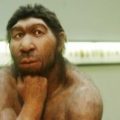随着PTE考生对PTE口语和PTE听力的重视,大家口语和听力的分数得到极大提高,但是PTE阅读渐渐成为考生们新的难题。
墨尔本悉尼文波PTE特别为PTE考生们挑选了适合练习PTE阅读的文章,主题,内容,长度都与PTE阅读题中的文章相似。激活学过的词汇,更新新的词汇,提高阅读速度,全面提升自己的阅读能力。
In the 1960s, Mercury astronauts Alan Shepard, Gus Grissom, John Glenn and others absorbed the accolades of being the first men in space. Behind the scenes, they were supported by hundreds of unheralded NASA workers, including “human computers” who did the calculations for their orbital trajectories. “Hidden Figures,” a 2016 book by Margot Lee Shetterly and a movie based on the book, celebrates the contributions of some of those workers.
Beginning in 1935, the National Advisory Committee for Aeronautics (NACA), a precursor of NASA, hired hundreds of women as computers. The job title designated someone who performed mathematical equations and calculations by hand, according to a NASA history. The computers worked at the Langley Memorial Aeronautical Laboratory in Virginia.
Human computers were not a new concept. In the late 19th and early 20 thcentury, female “computers” at Harvard University analyzed star photos to learn more about their basic properties. These women made discoveries still fundamental to astronomy today. For example: Williamina Fleming is best known for classifying stars based on their temperature, and Annie Jump Cannon developed a stellar classification system still used today (from coolest to hottest stars: O, B, A, F, G, K, M.)
accolade: n. 嘉奖;赞许
unheralded: adj. 未事先宣布的;没料到的;未被承认的
trajectory: n. <物>弹道,轨迹;轨道
precursor: n. 先驱;先行者;先兆





